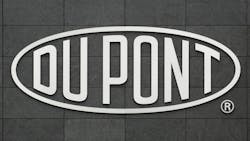DuPont expects $60 million in additional costs this year due to tariffs tied to U.S.-China trade tensions, the company said in a first-quarter earnings release.
The company expects most of the impact to hit in the second half of 2025.
The company initially faced up to $500 million in tariff-related exposure due to cross-border shipments within its own operations, particularly those involving exports to facilities in China for final processing, according to company executives. Through a combination of exemption requests, supply chain shifts and cost pass-throughs, DuPont has reduced that figure significantly, the company said.
“Our global manufacturing footprint and flexible supply chain network serves us well as we manage through the impact of tariffs,” said CEO Lori Koch in a press statement.
CFO Antonella Franzen added that the projected $60 million cost would be divided between DuPont’s electronics and industrial business segments.
China and Hong Kong represent DuPont’s second-largest market, accounting for 19% of its $12.39 billion in revenue last year, largely from semiconductor manufacturing, the company said. DuPont operates nine manufacturing sites, five research centers and six offices in China.
The new tariffs follow retaliatory measures between the U.S. and China, including a 145% tariff imposed on certain U.S. goods exported to China and a separate investigation targeting DuPont’s Tyvek plant in Shanghai. Although Tyvek makes up only 1% of DuPont’s business, the company confirmed it has complied with document requests related to the investigation.
DuPont’s electronics unit, which will spin off in November as Qnity Electronics, is particularly exposed to the tariff environment. The company is pursuing alternatives to U.S.-sourced materials and emphasized supplier diversification across its global footprint, reported the Delaware Business Times.
Despite these challenges, DuPont reported strong first-quarter results, including a 14% increase in electronics segment sales and low-teens growth in water treatment and health-care technologies. Semiconductor demand, especially in China, continues to drive volume gains, while the company maintains its full-year guidance.
About the Author
Amanda Joshi
Managing Editor
Amanda Joshi has more than 18 years of experience in business-to-business publishing for both print and digital content. Before joining Chemical Processing, she worked with Manufacturing.net and Electrical Contracting Products. She’s a versatile, award-winning editor with experience in writing and editing technical content, executing marketing strategy, developing new products, attending industry events and developing customer relationships.
Amanda graduated from Northern Illinois University in 2001 with a B.A. in English and has been an English teacher. She lives in the Chicago suburbs with her husband and daughter, and their mini Aussiedoodle, Riley. In her rare spare time, she enjoys reading, tackling DIY projects, and horseback riding.

